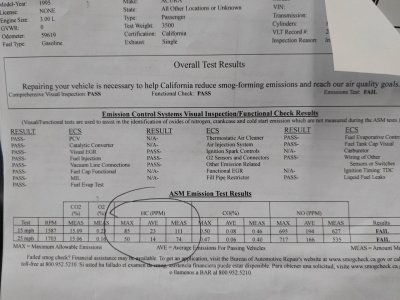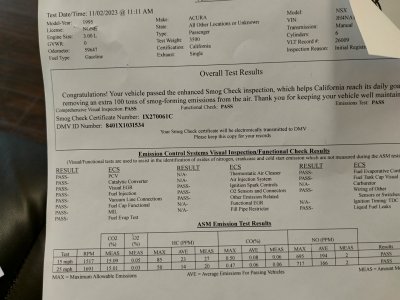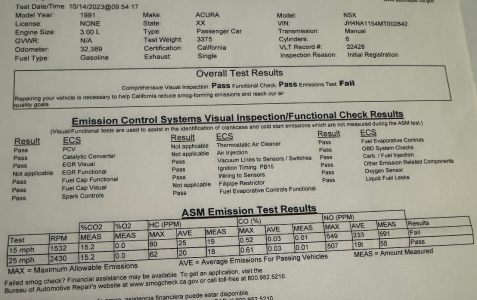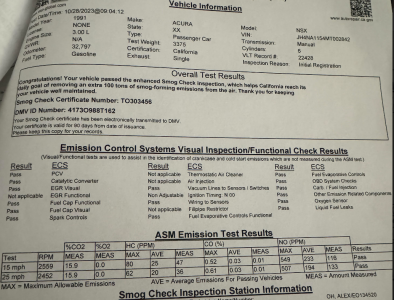Starting a tread on CA Smog limits. I am hoping owners would put up pics of their results so we can figure out reasons and fixes for smog fails.
Car year, model, miles, etc.
I bought the car out of Colorado and I had to put the exhaust back to oem. Got cats from ebay with unknown number of miles and failed smog.
Got a second pair of cats from a forum member and passed smog.

1995 MT with 60,000 miles. The forum member had indicated 104,000 miles on the cats that passed smog. The emission difference is striking.
Car year, model, miles, etc.
I bought the car out of Colorado and I had to put the exhaust back to oem. Got cats from ebay with unknown number of miles and failed smog.

Got a second pair of cats from a forum member and passed smog.

1995 MT with 60,000 miles. The forum member had indicated 104,000 miles on the cats that passed smog. The emission difference is striking.








